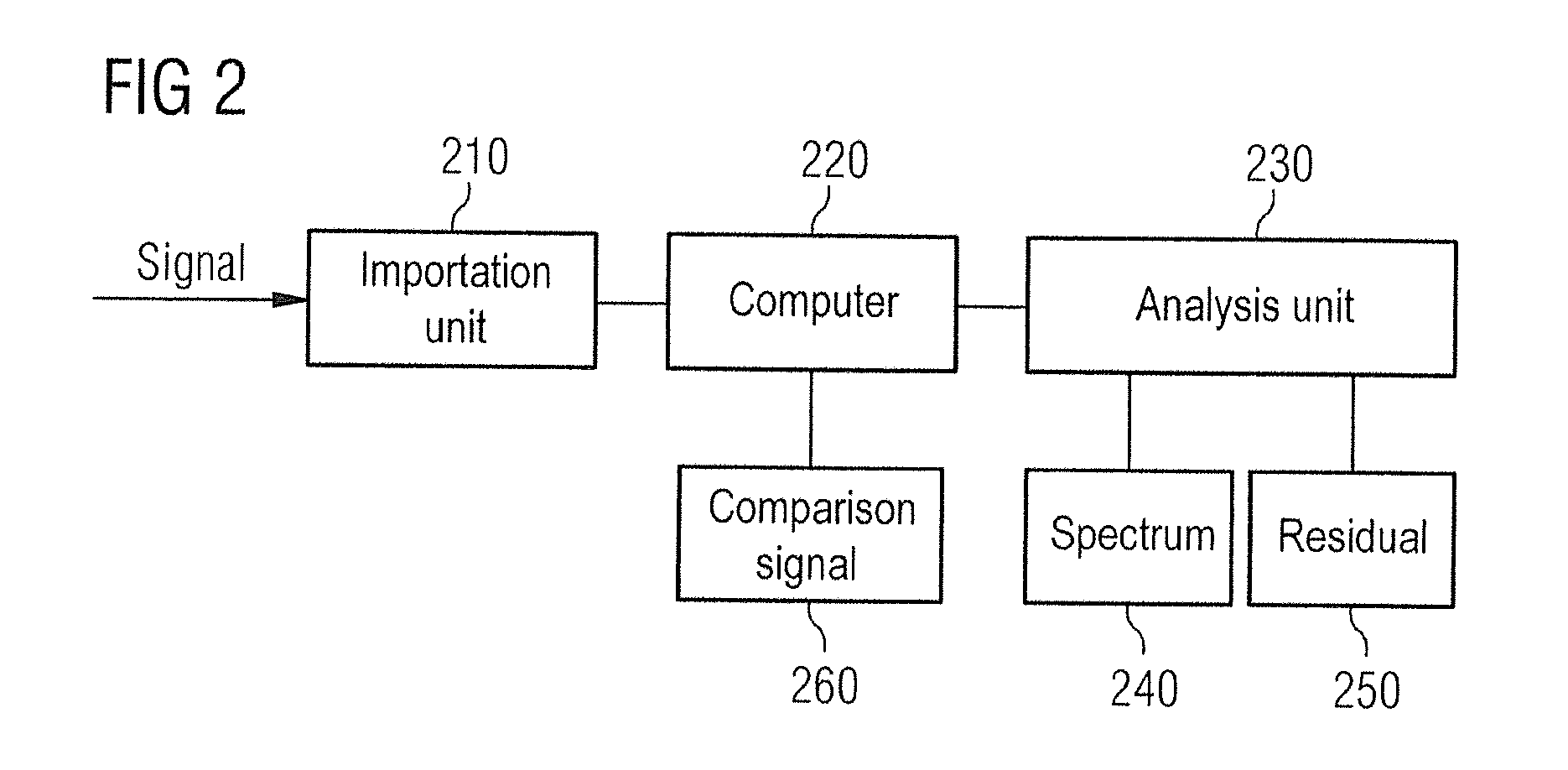Magnetic resonance method and system to detect interference signals in magnetic resonance spectroscopy signals
a magnetic resonance spectroscopy and interference signal technology, applied in the field of magnetic resonance method and system to detect interference signals in magnetic resonance spectroscopy signals, can solve the problems of non-optimal residual, interference signals occur, and hinder the signal evaluation of usable signals, so as to reduce labor costs and achieve reliable results
- Summary
- Abstract
- Description
- Claims
- Application Information
AI Technical Summary
Benefits of technology
Problems solved by technology
Method used
Image
Examples
Embodiment Construction
[0030]FIG. 1 schematically illustrates a magnetic resonance system 5 that can be used both for imaging magnetic resonance tomography and for magnetic resonance spectroscopy. A basic magnetic field magnetic 1 generates a temporally constant, strong magnetic field for polarization or alignment of the nuclear spins in an examination region of a subject O, for example of a portion of a human body that is to be examined. This subject O, situated on a table 23, is moved into the magnetic resonance system 5 for data acquisition. The high homogeneity of the basic magnetic field that is required for the magnetic resonance measurement (data acquisition) is defined in a measurement volume M. Shim plates made of ferromagnetic material are mounted at a suitable point to assist the homogeneity requirements, in particular to eliminate temporally invariable influences. Temporally variable influences are eliminated by shim coils 2 supplied with signals from a shim coil supply 23.
[0031]A cylindrical ...
PUM
 Login to View More
Login to View More Abstract
Description
Claims
Application Information
 Login to View More
Login to View More - R&D
- Intellectual Property
- Life Sciences
- Materials
- Tech Scout
- Unparalleled Data Quality
- Higher Quality Content
- 60% Fewer Hallucinations
Browse by: Latest US Patents, China's latest patents, Technical Efficacy Thesaurus, Application Domain, Technology Topic, Popular Technical Reports.
© 2025 PatSnap. All rights reserved.Legal|Privacy policy|Modern Slavery Act Transparency Statement|Sitemap|About US| Contact US: help@patsnap.com



